
This ia an example of AEM in an IEP.
- Subject:
- Education
- Special Education
- Material Type:
- Case Study
- Author:
- Chandra Pinnock
- Gayl Bowser
- Date Added:
- 02/08/2024


This ia an example of AEM in an IEP.

This exercise allows students to explore how people with site-impairment “read” documents and digital media using screen readers. It provides students with a sample memorandum to review for communications effectiveness. Then, by using a freely downloadable screen reader (and/or an enabled text-to-talk feature) and an embedded accessibility checker, students will evaluate the accessibility of the sample memo. With an altered appreciation of audience (now aware of sight-impairment disability), students will revise the memo using universal design principles and best practices for creating accessible documents. Using those experiences, students will be guided to reflect upon other disabilities and accommodations in the workplace. Finally, students will explore ability privileges and create a plan to identify, monitor and control blind spots. | Introductory except from a presentation at the Eastern Academy of Management on 26 June 2020 | Appendix containing ideas for modifying the exercise

ObjectivesBy the end of this session, we will be able to:● Partner with administrators to develop a realistic,scaffolded action plan for beginning to align CSCPstaff use of time with 5030 and the ASCA NationalModel● Consider how the CSCP will begin to shift this yearto incorporate preventative, proactive,developmentally appropriate Tier 1 activities for ALLstudents

Students will be learning Fast Food slang vocabulary via a Google Slide Presentation. (Note: These signs have been verified with multiple Deaf adults). Students will also be given a prompt as to how to make a specific Fast Food business more accessible to the Deaf.
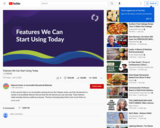
In this second video in our Accessible Learning Across the Lifespan series, you’ll be introduced to a variety of accessibility features that are built into t...
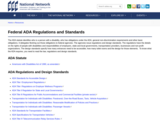
Federal ADA Regulations and Standards
The ADA statute identifies who is a person with a disability, who has obligations under the ADA, general non-discrimination requirements and other basic obligations. It delegates fleshing out those obligations to federal agencies. The agencies issue regulations and design standards. The regulations have the details on the rights of people with disabilities and responsibilities of employers, state and local governments, transportation providers, businesses and non-profit organizations. The design standards specify how many entrances need to be accessible, how many toilet rooms and the design for those elements. To know what the ADA requires, you need to read the law, regulations and design standards.
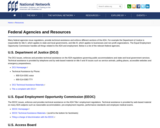
Federal Agencies and Resources
Many federal agencies issue regulations, provide technical assistance and enforce different sections of the ADA. For example the Department of Justice is responsible for title II, which applies to state and local governments, and title III, which applies to businesses and non-profit organizations. The Equal Employment Opportunity Commission handles all things related to the ADA and employment. Below is a list of the relevant federal agencies.

The Library of Congress is adopting amendments to its regulations regarding loans of library materials for blind and other print-disabled persons, as authorized by Title XIV of the Library of Congress Technical Corrections Act of 2019, to amend terminology, the description of services, and certification requirements, and to memorialize existing practices in the Library of Congress's National Library Service for the Blind and Print Disabled (NLS).
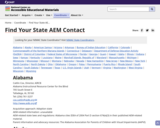
This website provide a list of all the AEM State Contacts in the United States.
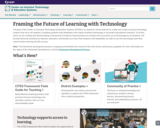
Framing the Future of Learning with Technology
The goal of the Center on Inclusive Technology & Education Systems (CITES) is to empower school districts to create and sustain inclusive technology systems that serve all students, including students with disabilities who require assistive technology or accessible educational materials. To do this work, we are creating and disseminating a framework of evidence-based practices to enhance the successful use of technology by all students. We provide technical assistance to districts, educators, and families to ensure that students with disabilities are able to use the technology tools they need to foster learning and life success.
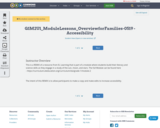
This is a REMIX of a resource from EL Learning that is part of a module where students build their literacy and science skills as they engage in a study of the sun, moon, and stars. The full Module can be found here - https://curriculum.eleducation.org/curriculum/ela/grade-1/module-2 The intent of this REMIX is to allow participants to make a copy and make edits to increase accessibility.
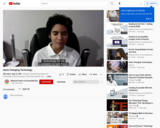
Students describe the impact of technology on their learning. They share specific examples of accessibility tools and highlight how each has supported their engagement and learning in school in powerful ways. This video is a great tool for highlighting the importance of making sure that instructional materials are accessible to all students. It is easier to ask instructional material providers before adopting curriculum rather than trying to retrofit materials (if that is even possible) after adopting materials.
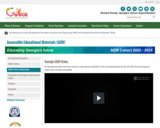
Georgia AEM Vision
All Georgia students will have access to educational materials in the most appropriate format and with the technology to make those formats accessible.
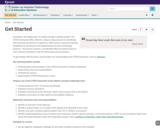
Get Started
Sometimes the hardest part of making change is getting started. The CITES framework offers districts a step-by-step process for identifying and removing any barriers to student or staff success caused by learning disabilities by planning for and implementing inclusive technology practices. The process requires a coordinated effort by district teams to move forward seamlessly with the framework and its practices.
To get started with the terms and concepts we use throughout the CITES framework, visit our Glossary.

On Thursday, March 9th, in celebration of Open Education Week, the #GoOpen National Network presented the session, OER & Digital Accessibility, featuring Cynthia Curry of the National Center on Accessible Educational Materials for Learning (AEM Center) at CAST, in conversation with Vanessa Clark, Aujalee Moore, and Matt Hiefield of the Oregon Department of Education, and facilitated by Amee Evans Godwin of ISKME and #GoOpen.Learn more about accessibility and open educational resources (OER), including shared definitions, benefits, guidelines, and implementations so that educators can better support learners with disabilities and learning preferences.
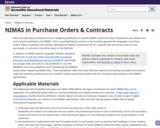
Model language is to be included in all purchase orders, bid specifications, and contracts related to digital materials, including commerical as well as OER
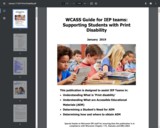
This publication is designed to assist IEP Teams in:
• Understanding What is ‘Print disability’
• Understanding What are Accessible Educational
Materials (AEM)
• Determining a Student’s Need for AEM
• Determining how and where to obtain AEM

Guidelines to explain how SLATE Concept Papers are shared, maintained, and revised.
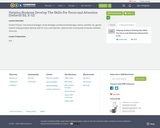
Student Primers, Instructional Strategies, Study Strategies and Recommended Apps, Games, Activities, etc. geared towards helping students develop skills for Focus and Attention. Optional links to thousands of teacher-reviewed resources.

The purpose of the National AEM Center’s Quality Indicators with Critical Components for Higher Ed is to assist institutes of higher education, both at the system and campus level, with planning, implementing, and evaluating systems for providing accessible materials and technologies for all students who need them. Higher Ed institutions, both universities and community colleges, will find the Quality Indicators useful for implementing statutory requirements that mandate equitable access to learning opportunities for students with disabilities, including equal access to printed materials, digital materials, and technologies.